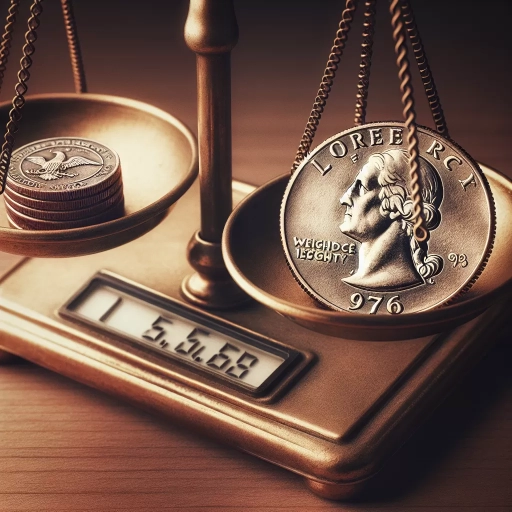How Much Does A Quarter Weigh

Understanding The Measurements: The United States Quarter
The Basic Composition of a Quarter
The U.S. quarter holds immense historical and monetary significance since its initial minting in 1796. It's primarily made of copper and nickel, and its standard composition includes 8.33% Nickel and 91.67% Copper. This coin displays a unique design with the profile of George Washington on the obverse side and an eagle on the reverse side. Understanding the composition of the quarter is central to recognizing the factors that contribute to its weight.
Official Weight of a United States Quarter
The United States Mint officially stipulates the weight of a quarter as 5.670 grams. This weight standard is maintained across all regular-issue quarters produced since 1965 for consistency and authenticity. It is crucial to note that the weight of the quarter could be marginally less or more in reality due to wear and tear, differences in minting processes over the years, and other minor variations.
Measuring The Weight of a Quarter
The weight of a quarter can be measured using a digital scale that provides precise readings, ideally to two decimal places (grams). It is important to ensure that the scale is correctly calibrated before use to avoid inaccuracies. Keep in mind that environmental factors such as temperature and humidity could affect the scale's precision. Furthermore, the condition of the quarter should be considered, as older or more worn coins may weigh slightly less than the official weight.
Factors Influencing The Weight of the Quarter
Variations in Minting Processes
Over the years, changes in the minting process might have led to slight discrepancies in the weight of the quarter. For example, advancements in technology, varying quality of minting materials, and differences in manufacturing standards may result in nuanced differences in weight. Therefore, it's not entirely unusual for two quarters minted in different years or locations to have a slight variation in weight.
Effects of Usage and Wear
Quarters that have been in circulation for longer periods are likely to weigh less due to wear and tear. Over time, the rubbing off of metal from regular use lowers the weight, which is why older quarters often weigh slightly less than newly minted ones. Additionally, quarters that have been damaged or altered in any way may also have a different weight.
Counterfeit quarters
A counterfeit or fake quarter might deviate significantly from the standard weight. These coins are usually made using different materials and methods, leading to a discrepancy in weights. Therefore, if a quarter weighs far less or more than 5.670 grams, there's a chance that it might be counterfeit.
Historical Changes to the Weight of the Quarter
Pre-1965 Quarters
Before 1965, quarters were composed mostly of silver, with a weight of approximately 6.25 grams. The switch from silver to a copper-nickel composition in 1965 led to a reduction in the weight of US quarters. The silver quarters were heavier because silver is a denser metal than both nickel and copper.
The Bicentennial Quarter
In 1976, a special quarter was minted to celebrate the bicentennial of America's independence. This coin is identical in weight to the standard quarter, even though it has a different design and was issued for a limited time. The consistency in weight across special-edition and regular-issue quarters underscores the mint's rigorous standards.
The State and America the Beautiful Quarters
The State quarters (1999-2008) and the America the Beautiful quarters (2010-2021) are part of series that feature unique designs representing each of the 50 states and territories. Despite these visual differences, the coins adhere to the standard quarter weight of 5.67 grams, demonstrating another instance of the US Mint's commitment to weight consistency across its coinage.